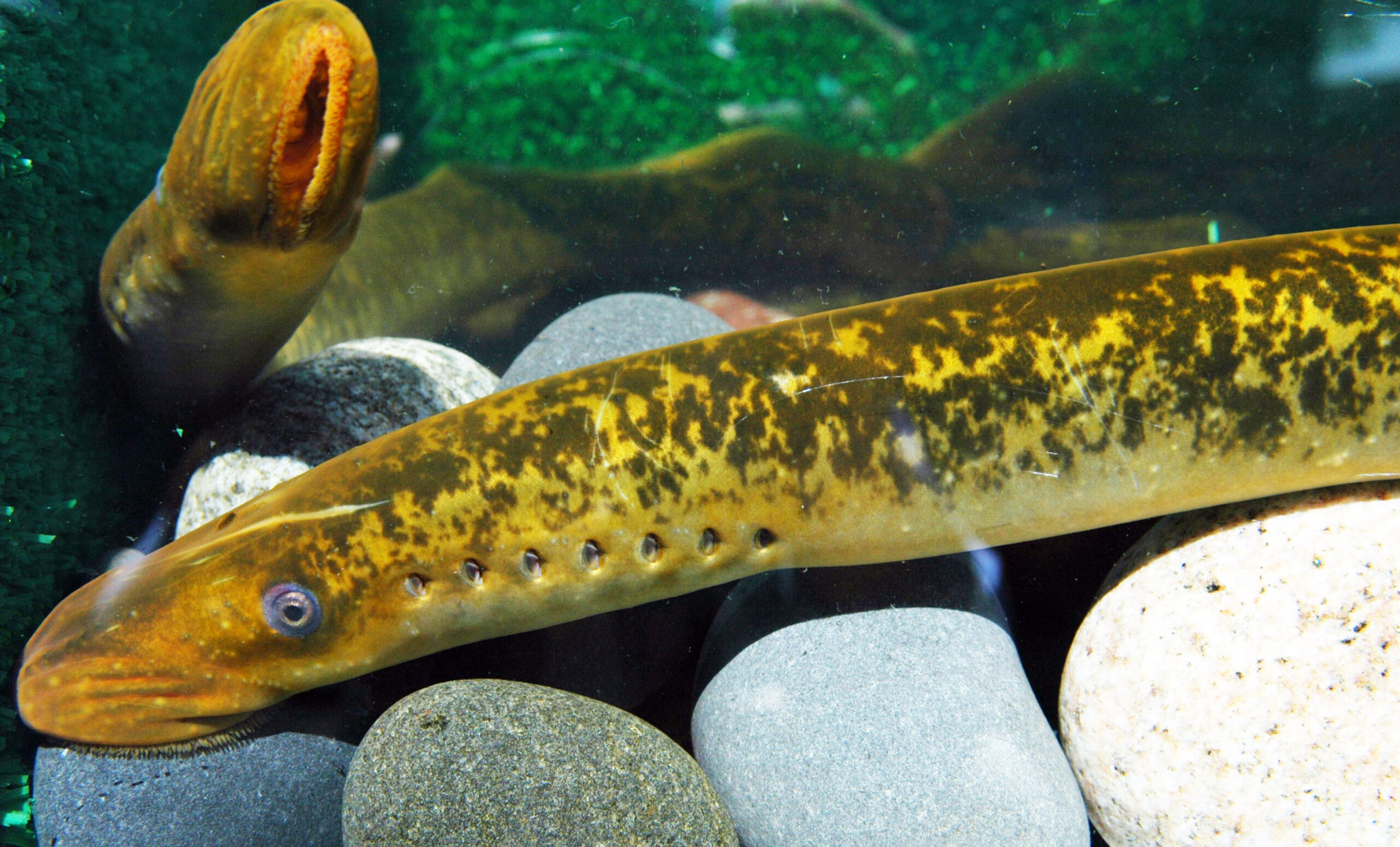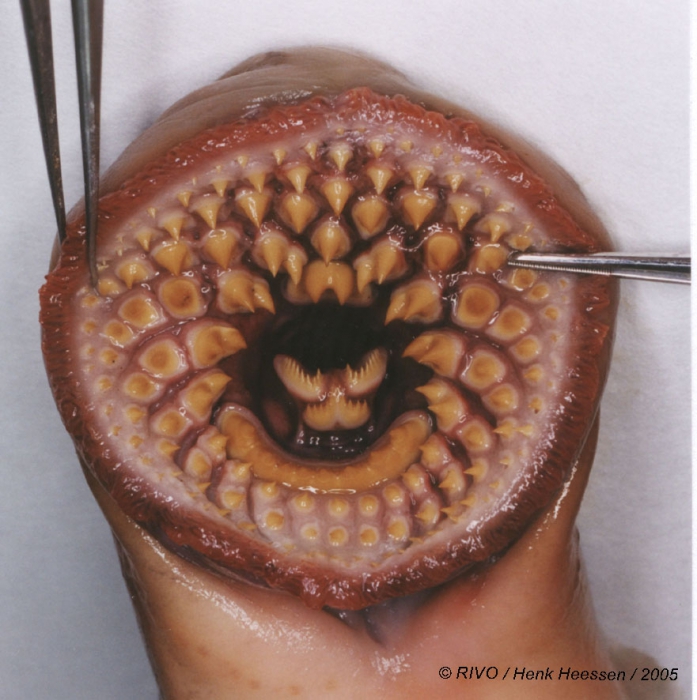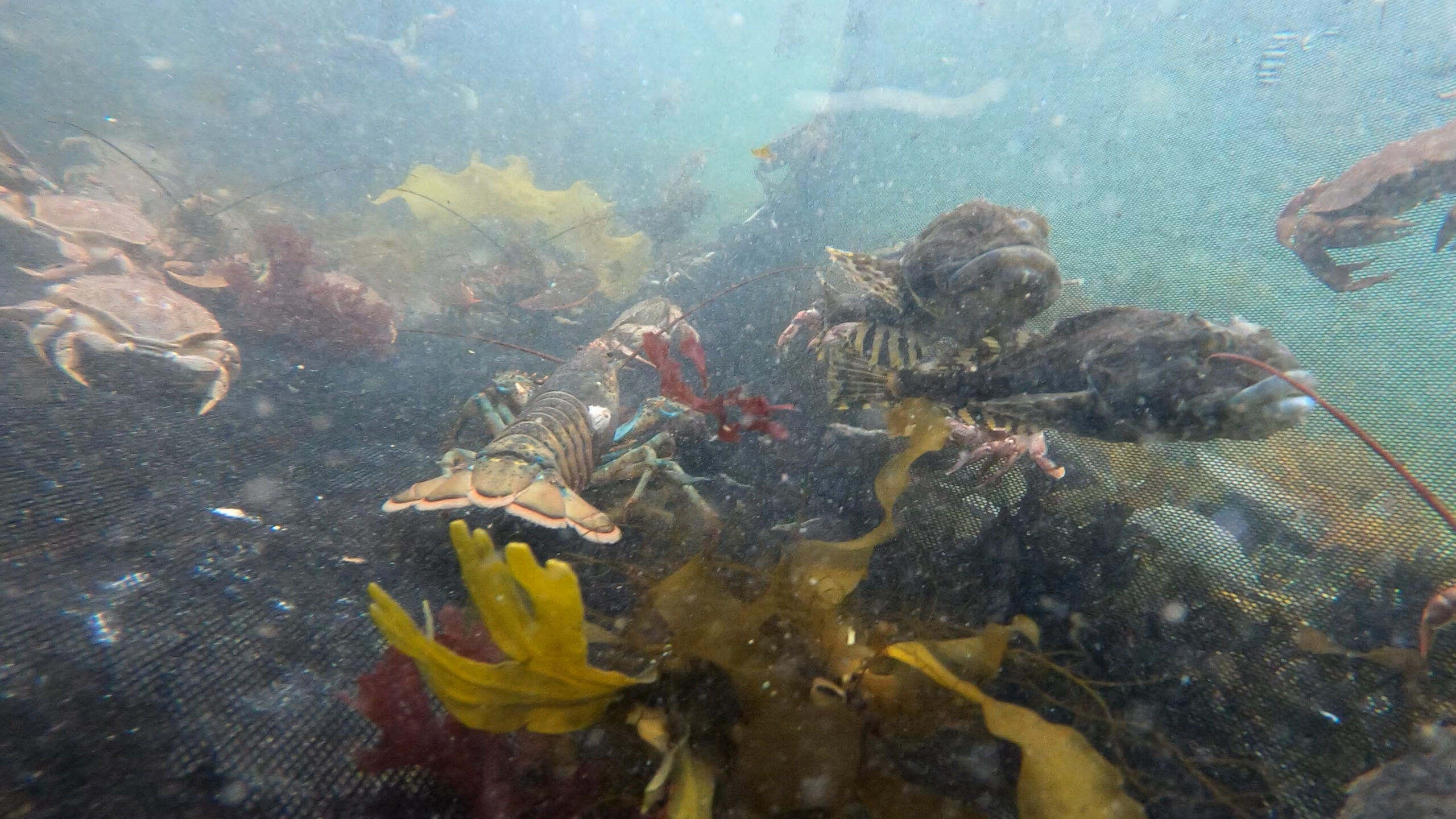
SIZE:
120 cm for 2.5 kg.
LIFE EXPECTANCY:
Around 9 years.
LIFE CYCLE:
Adults live two to three years in the ocean before migrating to fresh water during spring and summer to reproduce.
Sea lampreys build a 60 to 90 cm wide nest in the substrate. The male defends the nest, in which the female lays around 230,000 eggs. Sea lampreys die after spawning.
After 10 to 15 days, the eggs hatch. The larvae, which are blind and toothless, develop over a period of six to eight years, feeding on algae and plankton. The adult lampreys then migrate to the estuary and the open sea during autumn.
Fluid communication
Sea lampreys release pheromones through their skin to communicate. Males and females that are ready to reproduce use this chemical substance to attract each other.
The sea lamprey has a long, cylindrical body, like that of the eel. It has no scales. Its colour is generally yellowish, marbled with brown and black on its back.
It has three fins and seven branchial openings on each side of its small head.
Its circular mouth, which is wider than its body, is armed with several rows of cone-shaped teeth. The mouth acts like a suction cup, helping it stick to other individuals. The lamprey’s tongue pierces and scrapes the skin of its prey.
In the water column, down to 4000 m depth.
Sea lamprey can withstand temperatures between 1 and 20 °C.
Its habitat varies throughout its life. Certain sea lamprey populations live in salt water and migrate to fresh water to reproduce. It is an anadromous fish. Other populations spend their lives in freshwater lakes.

The lamprey is more at home in the depths.
Credit : C. Krueger, GLFC
PREYS:
Fish
Herring
Salmon
Cod
Strugeon
PREDATORS:
Striped bass
Swordfish
Sea lampreys (cannibalism)

The sea lamprey feeds on the blood and flesh of its prey. These prey rarely survive.
Credit : Henk Heessen, photo taken in 2005.
No commercial fishing in Québec.
The sea lamprey can cause significant economic losses for the fishing industry, because of the injuries it inflicts on fish of interest.
Sea lamprey is a Smarter seafood-listed species.
BENEFITS:
Rich in protein and fatty acids, low in carbohydrates.
LET’S COOK:
Fatty, soft and tender texture. Earthy flavour and a pronounced taste, sometimes compared to that of meat.
The sea lamprey is not eaten as a fillet. It is cut and cooked in pieces. It has no bones, only a rigid dorsal structure that can give it a crunchy texture. This structure can also be removed.
OUR CULINARY ADVICE:
- It is essential to clean the lamprey thoroughly, as the mucus covering its body can be toxic.
- If the fishmonger has not done so, the sea lamprey must be bled before cooking. The blood is traditionally saved and mixed with vinegar or wine. This mixture is used for cooking, particularly in the recipe for lamprey à la Bordelaise.
- Long simmering times of two to three hours will make its flesh melt in your mouth.
- Certain ingredients are recommended to lighten its taste: garlic, thyme, bay leaves, onions, leeks and red wine, the latter preferably fruity with a hint of acidity.
A fish unlike any other
One of the characteristics of members of the fish family is that they have jaws. Yet, sea lampreys have none. They are, therefore, a very ancient species. They are also the only fish that must be bled before cooking.






